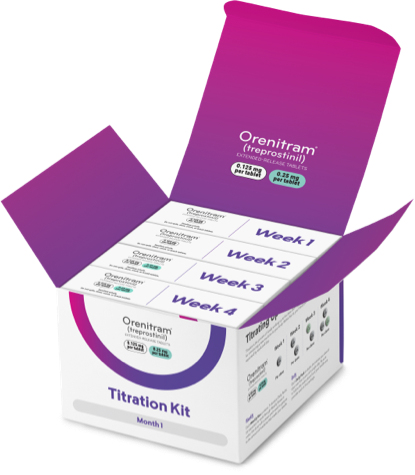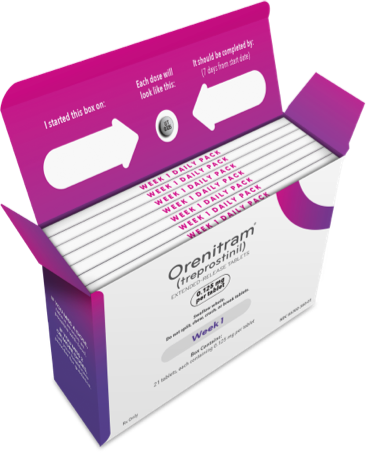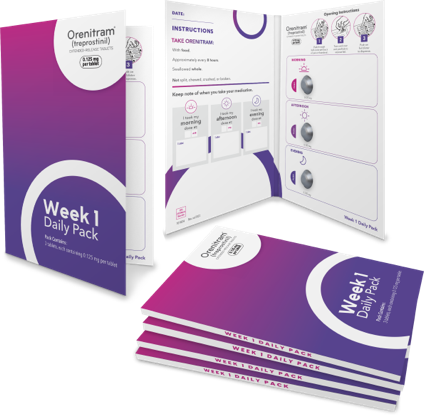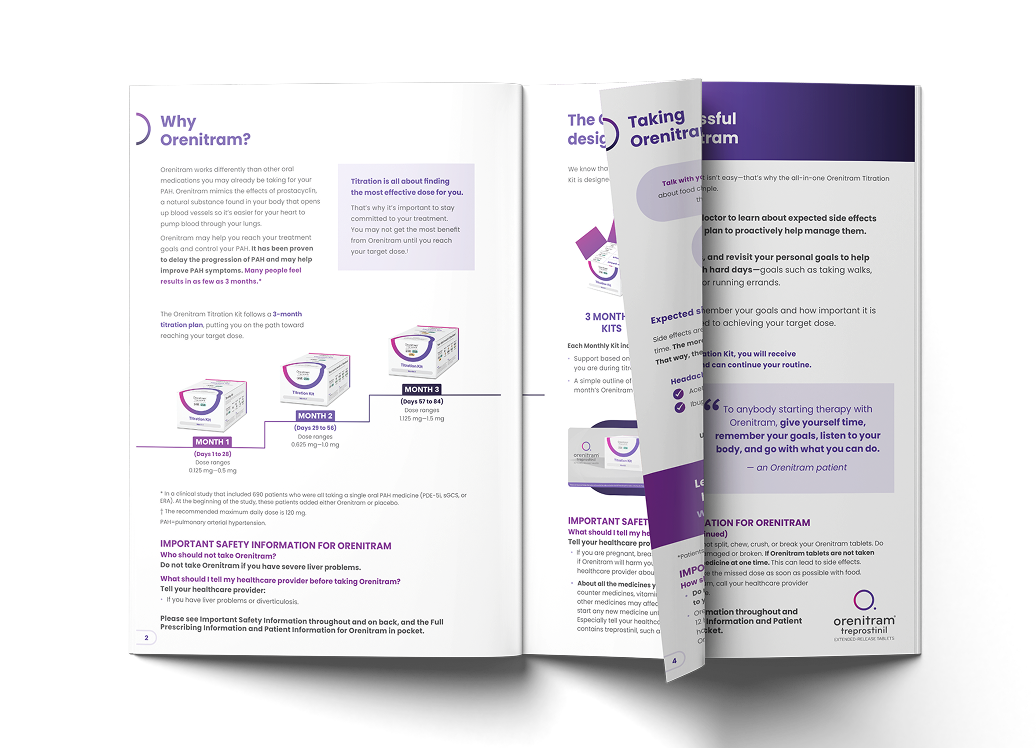The All-in-One Orenitram Titration Kit
Through guidance and reminders, this kit helps your patients titrate to their target dose of Orenitram by:
- Following a 0.125 mg TID weekly titration schedule to achieve 4.5 mg TDD in 12 weeks1, halfway to the initial target TDD of 9 mg
- Steadily increasing their dose every week to reach necessary exposure1
Patients who need more flexibility may begin Orenitram with individual strength bottles
See What’s Inside

3 Monthly Shipments
Each monthly shipment includes:
- Information and support based on where the patient is during titration
- A simple outline of that month’s Orenitram doses

4 Weekly Boxes
Each weekly box includes:
- Instructions on how to take Orenitram
- What to do if your patient misses a dose

7 Daily Packs
Each daily pack includes:
- The exact morning, afternoon, and evening doses of Orenitram
- Tools to help ensure your patient is staying on track
The Titration Kit Patient Start Guide provides information and support to confidently start patients on the Orenitram Titration Kit.
Download GuideThe 3-Month Titration Path
Patients will follow a 0.125 mg TID weekly titration schedule, allowing them to steadily increase their dose each week to reach necessary exposure.1
Month 1 (Day 1 to 28)
2
3
Week 1
0.125 mg TID
Week 2
0.250 mg TID
Week 3
0.375 mg TID
Week 4
0.5 mg TID
Target TDD: 1.5mg
Support the titration process from the start
START
Start with 0.125 mg TID
(~8 hours apart)1*
TITRATE
Continue titration1†
MONITOR
Monitor for continued clinical response and tolerability1
*You can also choose a BID (~12 hours apart) dosing schedule, starting at 0.25 mg BID and titrating in 0.25 mg BID increments as tolerated.1
†Titrate no more frequently than every 3 to 4 days.1
“We noticed in FREEDOM-EV—and even earlier—that our patients who achieve higher doses seem to have better outcomes.”
—AN ORENITRAM PRESCRIBER
Frequently Asked Questions
